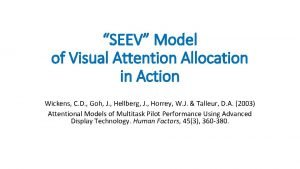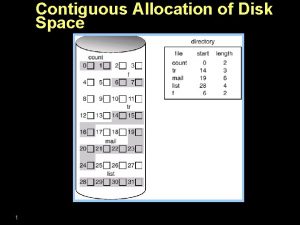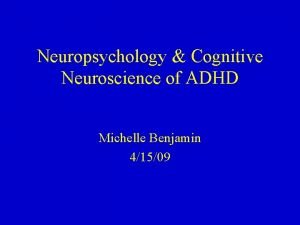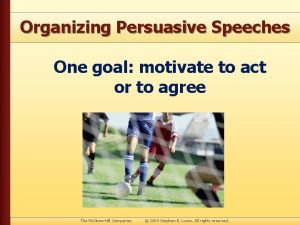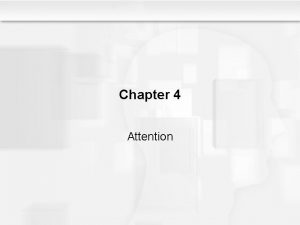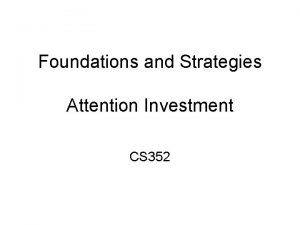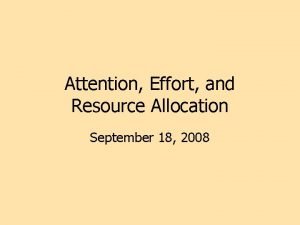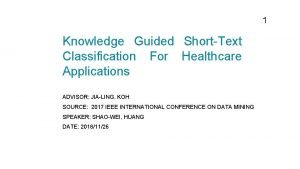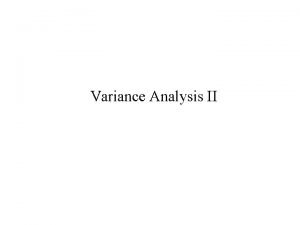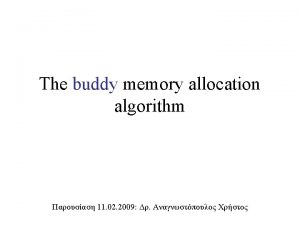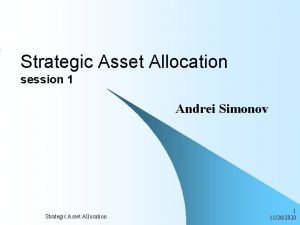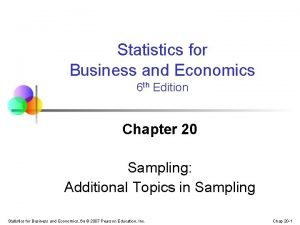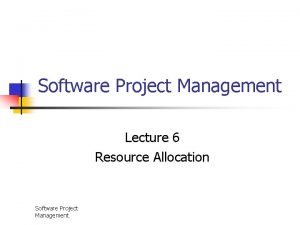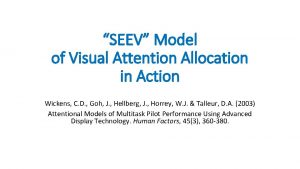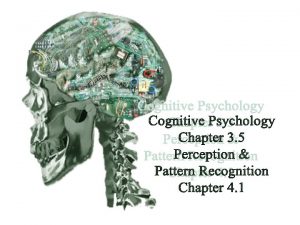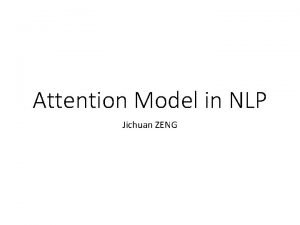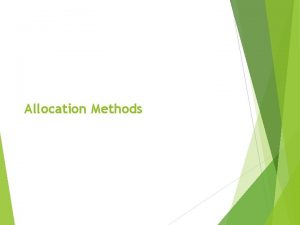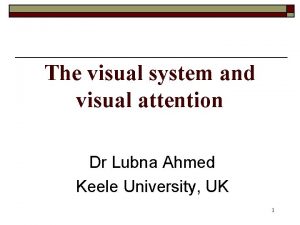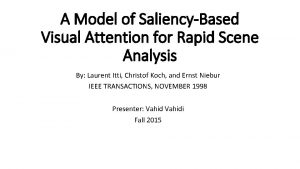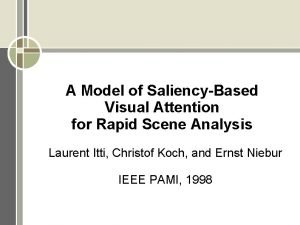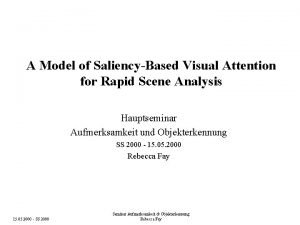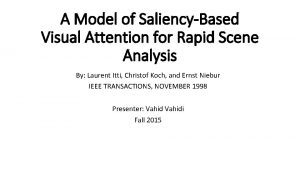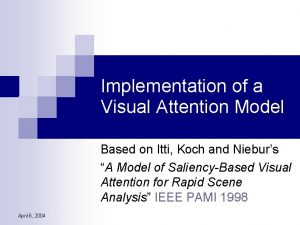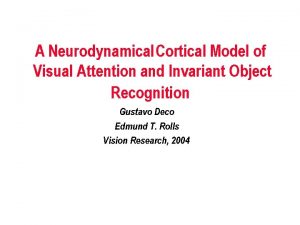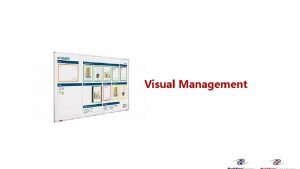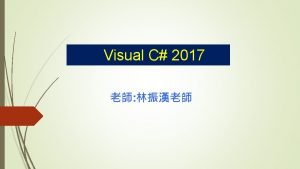SEEV Model of Visual Attention Allocation in Action

























- Slides: 25

“SEEV” Model of Visual Attention Allocation in Action Wickens, C. D. , Goh, J. , Hellberg, J. , Horrey, W. J. & Talleur, D. A. (2003) Attentional Models of Multitask Pilot Performance Using Advanced Display Technology. Human Factors, 45(3), 360 -380.

Flying a Plane (Main Subtasks) • AVIATE Maintain aerodynamic stability (prevent stalling) • NAVIGATE Maintain SA regarding hazards (traffic; terrain) and progress toward destination • COMMUNICATE Interact with ATC

The modern “glass cockpit” has evolved in such a way as to change the mix between the demands of auditory versus visual information processing Digital uplinks and visual display of information to the pilot provides robust and redundant support of SA (Reducing the potential for missed and/or misunderstood comms)

Wickens et al. (2003) examined these issues --- focusing upon how the deployment of new display technology influences pilot mental workload (resource demands) and performance Miranda will present details regarding this aspect of the study Today, we will examine how Wickens et al. (2003) applied a subset of the SEEV family of models to predict spatial allocation of visual attention across a range of flight scenarios

Experimental Method • Flight simulation study • N=12 experienced pilots • Primary Task: Fly the plane (Aviate) • Concurrent Tasks: monitor surrounding air traffic follow flight directives from ATC • Procedure 6 IFR flights (30 minutes each) Each flight consisted of alternating “communication” and “traffic” segments

Communications Segment monitor information channel(s) for ATC flight directives (via voice; digital data link; or both) repeat ATC commands aloud execute required maneuver (heading; altitude; and/or flight speed) Δ WORKLOAD: 1 vs 3 part ATC directive

Traffic Segment monitor and “call out” location of other air traffic ATC “heads up” info provided via: auditory (voice) channel graphical display of traffic (CDTI) or both channels (redundant condition) Δ WORKLOAD: 1 vs. 4 planes encountered

Flight Simulator Cockpit

Areas of Interest (AOI) Outside World OW Digital ATC Data Link Cockpit Display of Traffic Info CDTI Instrument Panel Cluster IP

Sample Flight Scenario

% Dwell Time Results: (3) Experimental Conditions x (3) AOI

% Dwell Time Results: 10 Conditions x AOI Outcomes to be Modelled % Dwell Time Condition IP OW ----------Visual (Load=1) 64. 4 24. 2 Visual (Load=4) 50. 2 25. 8 Auditory (Load=1) 60. 3 39. 3 Auditory (Load=4) 44. 9 54. 6 CDTI -----11. 4 26. 2 ----- Slide 6

Salience, Effort, Expectancy, Value (SEEV) Model

Subset of SEEV Model tested by Wickens, et al. (2003) Optimal Expectancy Model in Expert Pilots

Preliminary Analyses: Identify Cognitive Tasks and Visual AOI’s Flight segments only

Map Visual AOI’s Relevance to Subtasks

Wickens, et al. 2003 Optimal Expectancy Model (SEEV submodel) AOI Task (P=3) (P=2)

Computational Model’s Prediction of Relative Visual Attention (across AOI’s)

Model coefficients are ORDINAL RANKINGS based upon expert task analysis (0=lowest; N=highest)

Optimal Expectancy Model Coefficients (Generated via Cognitive Task Analysis) See next slide for simplified Coefficient Tables

Wickens, et al. , 2003 Cognitive Task Analysis Results Expressed as (Quasi-Ordinal) Model Coefficients

Sample Computation of Visual Attention Allocation (Condition = Visual; Workload = 1=plane; AOI = IP)

Model Predictions vs. Empirical Dwell Times from Traffic Segments of Experiment 1

Homework Assignment Compute the Visual Attention predictions for the 10 Conditions Represented in SLIDE #6 and Plot their Relationship to the Mean Percent Dwell Times Observed in the Traffic Legs of Experiment 1 (i. e. , Replicate Figure 8; plot and R 2)

 Seev model of attention
Seev model of attention Linked allocation
Linked allocation Alternating attention vs divided attention
Alternating attention vs divided attention The plan of action that prescribes resource allocation
The plan of action that prescribes resource allocation Attention need satisfaction visualization action
Attention need satisfaction visualization action Yang termasuk bahasa pemrograman konvensional adalah
Yang termasuk bahasa pemrograman konvensional adalah Attention physiology
Attention physiology Selective attention definition psychology
Selective attention definition psychology An attention investment model
An attention investment model Zoom lens model of attention
Zoom lens model of attention Attention model
Attention model Exposition rising action climax falling action resolution
Exposition rising action climax falling action resolution Exposition plot
Exposition plot 5 stages of plot
5 stages of plot Exposition rising action climax falling action resolution
Exposition rising action climax falling action resolution Suit the action to the word the word to the action meaning
Suit the action to the word the word to the action meaning Concentric zone mode
Concentric zone mode Sean kelly pwc
Sean kelly pwc Variable overhead efficiency variance
Variable overhead efficiency variance Turn construction
Turn construction Buddy memory allocation
Buddy memory allocation Cloud cost allocation
Cloud cost allocation Capital allocation line
Capital allocation line Variance of population proportion
Variance of population proportion Spectrum allocation
Spectrum allocation Resource allocation in software project management
Resource allocation in software project management
